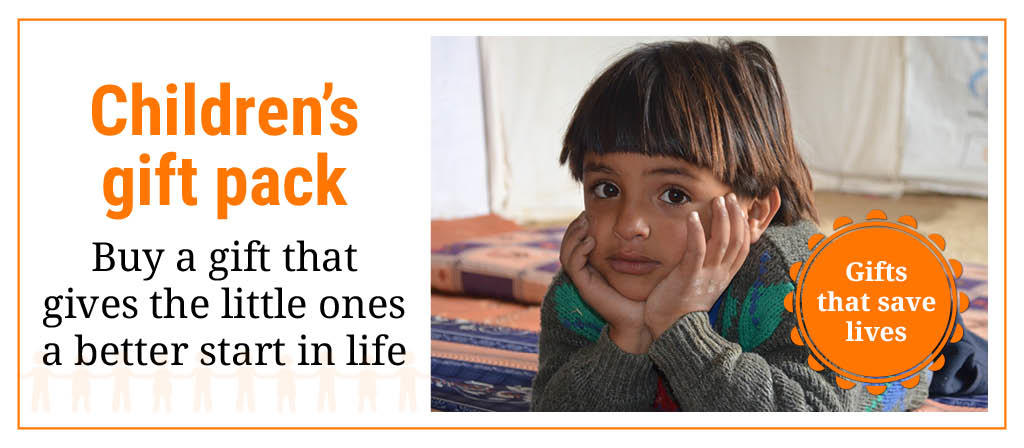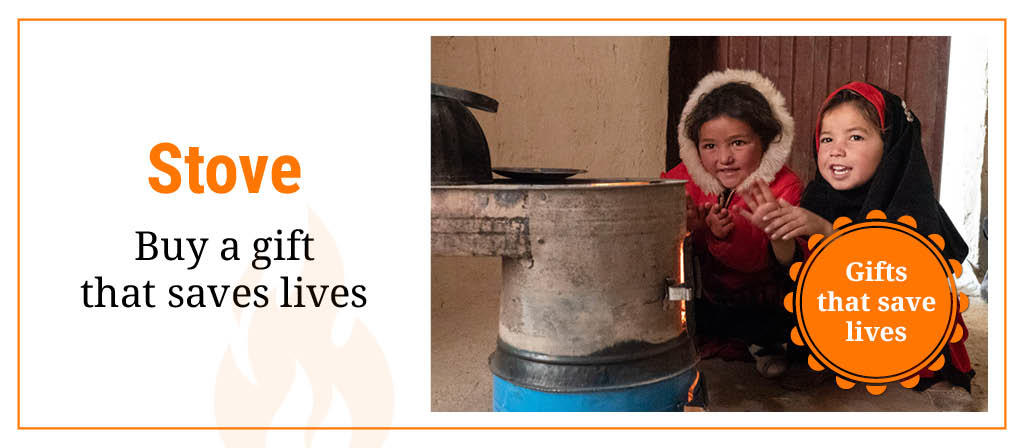
When I talk to Richard, he is self-isolating following a recent work trip to Lebanon. As per UK Covid-19 rules and regulations, he has separated himself from everyone, even his family. He is staying in a rented room just a couple of miles from home.
“I’m finding it harder to be away from home now than when I was in Lebanon,” says Richard. “I was away, and I couldn’t see my family and that was fine. Here, I can get on my bike and ride to the next village and there’s my home and my family in it. But I can’t go in. And that is so hard.”
Richard believes that everyone deserves a place to call home, even if it is temporary. Having a “home away from home” is the only way for displaced people to recover from the trauma of fleeing and to begin to rebuild their lives. Richard’s passion for making this happen shines through when I ask him about the importance of home for refugees.
“Imagine it, you’ve had no decisions to make up to now,” says Richard, shaking his head. “As soon as you got to the border, declared yourself a refugee and sought asylum, you had no choice in the process. You got shunted around.
“And then imagine if you’re suddenly offered the opportunity to: ‘go off and find out where you want to live’. This will be your home. You suddenly get choices. You get a level of control of your life again. Oh wow, amazing!”

“When my children are at home, they’re safe”
Richard is a father of two young boys. One plays rugby, the other is a keen guitarist. As a parent, Richard feels emotional when he sees families beginning their lives as refugees.
He remembers a time when he was working in Bangladesh, helping to build homes for the traumatised Rohingya population.
“I was sitting on the side of a hill and I watched a father bringing some materials he’d gathered into the camp,” he reminisces. “I watched him build something and I saw the urgency with which he did it. And I watched him putting his children inside it and I imagined myself very much in that role. It’s that moment where you put your arms around your family, and you feel safe.”
“It’s all about protecting your children. And I think that’s what a home gives you. I know that when my children are at home, they’re safe.”

Home is a place to make your own
The term “shelter” is often used in the humanitarian sector to describe the homes that refugees and displaced people live in. The term conjures images of twigs and tarpaulin, of flimsy tents in camps. Richard believes that this is a problem.
“If you say to a displaced person ‘I’m going to give you a shelter’… I mean, it doesn’t translate to any language. We need to get move on from it,” he says, with feeling. “Because if you are displaced and I say to you ‘I’m going to give you shelter’ then you are very much a passive recipient in the process. I’m giving you a tent and that’s it. I’m giving you the physical shelter, rather than offering you all the benefits that you could get from a home.”
Richard goes on to illustrate this point in the way he knows best – by giving an example from his professional experience.
“When the Rohingya people first arrived in Bangladesh they were hugely traumatised. They went straight into a ‘sheltering process’. They just wanted some semblance of safety.
“A couple of months later – and slowly, you could see it – people started decorating the outside of their ‘homes’. People started using their traditional techniques, working with bamboo to put decorations up. People started to be creative with their space. And that’s when you see that they are changing their shelter into a home.”

“So, I think if we had started talking to them from the beginning about what they wanted in their ‘home’, they would have come closer to us quicker. They would have crossed the ‘bridge’ quicker. So, it would have become much more of a joint process of housing between us and them.”
The term “shelter” is used intentionally, says Richard. It is used to remind refugees that their residency is temporary. This is something that he is determined to change.
“There’s the idea that if you are displaced and you are given something that is safe and dignified, that you relate to as your home, you will never go back to your place of origin,” Richard says, shaking his head. “This is a fallacy, I’m sure of it.”
The Norwegian Refugee Council builds homes for displaced people in places like Afghanistan, the Democratic Republic of the Congo, Iraq and Lebanon. Support our work today.
A spiritual connection
Richard draws a parallel with his own personal journey. After years of working internationally in places like Jordan, Somalia and Bangladesh, he, his wife and their two young children decided it was time to search for “home”.
The family bought a campervan and embarked on a journey, driving through Canada and the US in search of a place to settle down. When the six-month sabbatical was coming to an end, they had an epiphany.
“What we realised after a while was that we already had a home. And that is the home where we both grew up and where I met my wife.” Home is a small village in Cambridgeshire, England.

“I think it’s because as people we do have a spirituality which manifests in different ways. And I think we need to be connected to a place.”
“Cambridgeshire gives me a sense of wellbeing. It’s spiritual. It makes me feel calm. I think that’s why we go back to our homes. And it’s no different for refugees and displaced people, regardless of the support we provide during displacement, when its safe they desperately want to return to their homes.”
Fighting for an extra metre of tiling
Building homes instead of just simple shelters brings challenges. Richard has frequently clashed with funders over the details that move beyond making a simple shelter.
“I have fought many times over the height of tiling in bathrooms,” Richard says with his head in his hands. “Three tiles are all you’re allowed! And people need more than that. In Ukraine, for example, the temperature goes down to minus 20. And, you know, you can’t have bare walls in a shower. There will be icicles. You’ve got to have some sort of flexibility.”

This is where donations from the general public can make all the difference, because they can be used in a flexible way. They allow Richard and his colleagues to go the extra mile, sitting down with displaced people and discussing their needs.
“Flexible funding makes a huge impact. It means that I can spend a lot more time tailoring my design and response to you as a person. It means we can work in parallel with the big donors and therefore really understand what it means to make a home for people.”
“As humans, we want to belong”
When people are forced to flee, they not only lose their homes, but also their communities. That safety net that surrounds them.
Richard reminisces about his placement in Jordan. He was part of the team that set up Zaatari refugee camp, one of the largest camps in the world for Syrian refugees. He explained that when new families arrived, they had their IDs checked and were given a plot number and padlock. On each plot stood a caravan.
“Now, the first thing you do is figure out who is around you. And these families realised that all the people from their communities were also there, but were spread out all over the camp.
“As soon as no-one was looking, they started moving the caravans around. Because it was obvious: the first thing they wanted to do was to put their home next to people they knew. When you lose your home, you lose that social fabric that’s around you, that community.”
Richard begins to smile before making his next point. “We didn’t stop it. We let it happen. They began building little communities by joining four caravans together to create a little courtyard.”

“I think we as humans, I think we want to belong. You know we are tribal; we do want to belong as part of a group. And we allowed this to happen. It was a highlight for me.”
Richard has working for the Norwegian Refugee Council (NRC) for seven years. But he has also worked with a number of other aid organisations. I asked what it was about NRC that made it so special?
“I think I’m most proud that NRC has the foresight and the ambition to go further than just the simple structure itself. We are being allowed to delve into what makes a home for people.”
“If we can continue this development to say, look, we haven’t finished our work until we have what constitutes a home, that’s quite exciting. And no-one else is really doing that at the moment.”
Refugees are people who have had their homes ripped away from them. Most hope to return, but to do so, it must be safe. And this can take decades, or even entire lifetimes.
In the meantime, refugees deserve protection and to live with dignity. This is what a home provides. And this is why Richard and his team’s work is so incredibly important.
***
We supported over 1.5 million people through our shelter and settlements work in 2019.





